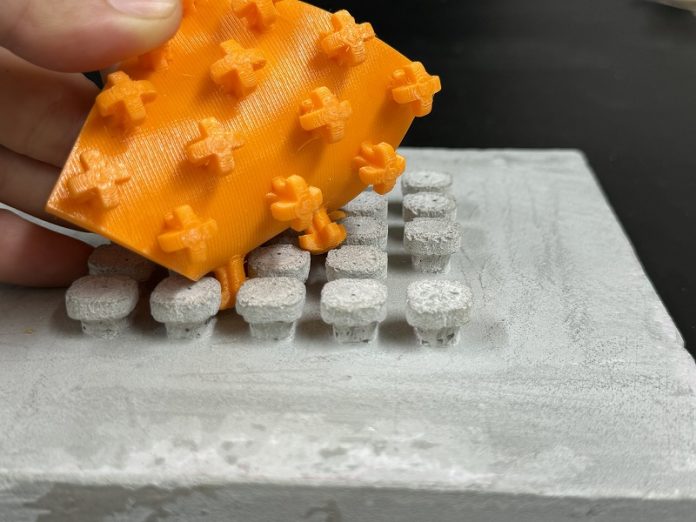
Researchers at Graz University of Technology (TU Graz) in Austria have developed a clever new way to put buildings together—using a system similar to Velcro.
The innovation comes from the ReCon project, which teamed up TU Graz experts with industry partners to explore how hook-and-loop fasteners could transform construction.
The idea is simple but powerful: many parts of a building have very different lifespans.
A concrete structure might last for decades, but interior walls, flooring, or installations usually wear out or need updating much sooner.
Traditionally, these shorter-lived parts are firmly fixed in place with glue, cement, or screws, which makes them hard to remove without damaging the main structure.
That often means major demolition, generating large amounts of waste.
The ReCon team tackled this by experimenting with hook-and-loop systems that can securely connect components while still allowing them to be taken apart when needed. They tested two main approaches.
In some cases, industrial hook-and-loop materials were glued directly onto concrete or wood. In others, they built the fastening system right into the components themselves, using materials such as wood, concrete, or even paper.
Specially designed 3D-printed elements with tiny hooks or mushroom-shaped heads were embedded into the parts, allowing them to lock together just like Velcro on shoes or clothing—only much stronger and on a larger scale.
Tests at TU Graz’s Laboratory for Structural Engineering showed that these new fasteners had impressive strength, similar to existing industrial products.
For now, the system is best suited for interior use, such as replacing lightweight walls or sections of installations, but researchers hope to improve it further by making the fasteners with injection-molded parts or stamped metal.
That would boost their strength and expand their use to more demanding applications.
The principle behind ReCon is “replace, don’t demolish.” Instead of tearing down entire sections of a building, only the parts that are worn out or outdated need to be swapped out.
This approach extends the overall lifespan of buildings and dramatically cuts down on construction waste and raw material use—two major environmental concerns in today’s world.
The project also included a digital twist. To make sure reused components can be tracked and safely handled, the team tested two ways of storing data directly on the building parts.
In one version, RFID chips were embedded into the elements, containing information such as the materials used and installation dates.
In another, QR codes were printed or etched directly onto the components. These can be scanned with a regular smartphone to reveal key details, helping assess condition, safety, and recyclability when parts are removed.
Visitors can see examples of this innovative building system in action at the exhibition More Than Recycling—The Exhibition on the Circular Economy at the Vienna Museum of Science and Technology, running until the end of 2026.
By rethinking something as simple as how parts of a building connect, TU Graz’s research could help create longer-lasting, more sustainable buildings—and reduce the mountains of waste created by traditional construction.



